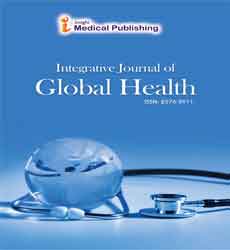ISSN : 2576-3911
Integrative Journal of Global Health
Biosafety and its Safe Handling
Abdul Salam*
Department of Molecular Biology & Genetics, Khyber Medical University, Pakistan
- *Corresponding Author:
- Abdul Salam,
Department of Molecular Biology & Genetics, Institute of Basic Medical Sciences, Pakistan, Email: salambinabdul@yahoo.com
Received Date: November 03, 2021; Accepted Date: November 17, 2021; Published Date: November
24, 2021
Citation: Salam A (2021) Biosafety and its Safe Handling. Integr J Glob Health Vol.5 No.4. 02.
"Bioethics" "The discipline devoted to the safe handling and control of irresistible microorganisms and hazardous natural elements," according to the definition of biosafety. The application of regulatory criteria and danger appraisal cultivates the act of safe treatment of pathogenic micro living creatures and their poisons in the natural lab.
To prevent openness of lab laborers to a microorganism or the inadvertent departure of amicroorganism from themicrobiological lab, the research Centre employs tiered, regulation criteria that are applied according to the risk assessment.
Essential and auxiliary controls are included in security layers. Workers in the natural research institution get immediate assurance from openness to substance and organic hazards thanks to essential control. Natural security cabinets, shoulder hoods, and other designing devices used by research facility specialists while working with an organic threat are examples of essential boundaries. Optional control is expected to protect research Centre workers, the surrounding environment, and the climate against unintentional organic pollution. Auxiliary regulation refers to elements of an office's engineering and mechanical plans that prevent worker contamination and the spread of germs from the research facility into the environment. Individual protective equipment (PPE, such as gloves, research facility coats, and security glasses) can also be considered an essential control; however, articles worn on the body are only used in conjunction with other essential and optional regulation components when working with pathogenic creatures.
Biosafety preparation is an important biosafety component that is recommended for each of the four biosafety levels. The Biosafety Officer or Occupational Health Specialist usually gives guests, understudies, and laborers at natural research facilities basic biosafety preparation. The Occupational Safety and Health Administration (OSHA) also require special preparation for work that may expose lab representatives to human blood or human blood products, as well as methodology that necessitates the use of a respirator. Researchers working in natural labs are frequently asked to demonstrate BSL-2 competency before moving on to a BSL-3 lab, and skill and unwavering quality are anticipated for employment in a BSL-4 high-regulation office. Because capability preparation is lab and job specific, the lead researcher or head agent is responsible for collaborating with the biosafety official, implementing biosafety and biosecurity into lab systems, and ensuring lab personnel skill preparation.
The organic risk assessment for a microbiological or biomedical study is still up in the air, and it involves assessing the risks posed by the natural specialist as well as the risks of related lab exercises. To determine the risk attributed to the organic specialty, a Hazard Analysis is used. The dangers of microbes are divided into four risk groups (RG): rising, rising, rising, rising, rising, rising, rising, rising, rising, rising, rising, rising, rising (RG1-RG4). An organic specialist's risk assessment is based on three factors: pathogenicity or the potential to cause illness in people or animals; the availability of a clinical countermeasure or prophylactic treatment for the linked contamination; and the infection's spread ability. Pathogenicity is commonly linked to the number of living creatures required to cause disease (measured in province shaping units or CFU), with bacteria requiring a low number of CFU for contamination being considered more harmful. Coxiella burnetti and Francisella tularensis are considered particularly harmful bacteria since they have been found to infect with 10 or fewer bacilli, compared to 103 bacilli for non-typhoidal Salmonella5. Antibodies and antimicrobials, as well as antiviral medications that are effective deterrents or remedies for disease, are examples of clinical countermeasures. Because of the potential for a long period to happen in a single episode, the ability of an irresistible illness to not be totally set in stone by the course of disease with germs given by sprayers
Open Access Journals
- Aquaculture & Veterinary Science
- Chemistry & Chemical Sciences
- Clinical Sciences
- Engineering
- General Science
- Genetics & Molecular Biology
- Health Care & Nursing
- Immunology & Microbiology
- Materials Science
- Mathematics & Physics
- Medical Sciences
- Neurology & Psychiatry
- Oncology & Cancer Science
- Pharmaceutical Sciences
